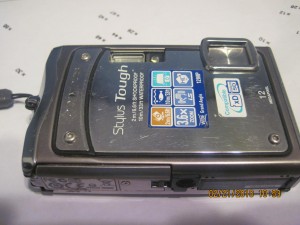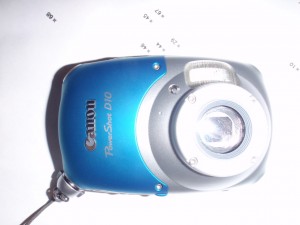TowBoatUS San Diego Puts Waterproof Cameras To The Test

When it comes to cameras, Vessel Assist San Diego has gone through dozens. In recent years some companies have stepped up to the plate and developed a digital camera that is not only water proof but shock resistant. As owner of one of the busiest commercial towing and salvage companies in the nation, I hit a nerve last year when my camera fell about 2 feet onto soft sand and the viewing screen shattered. So, off I went to get yet another digital camera. I found two cameras the first being an Olympus Stylus Tough 8000 for about $350.00 and the Canon Power Shot D10 for about $310.00. I decided to buy them both and give them a run for their money.
The Olympus looks like any other digital camera, silver in color and pretty much nothing at all that makes it look tough, but upon closer inspection the ports of the XD card and the plug in adapters are water tight and sealed. It is waterproof to 33′, has a drop rating of 6’6″, and a crush rating of at least 275lbs (since I have already accidentally stepped on it.) The 12 MP camera takes very good pictures, in fact most of the pictures on this web site are from the Olympus. The underwater pictures are borderline professional grade. The battery life is comparable to any digital camera. We have had this camera in the surf, under water, and in the rain. It has never failed. We did have water intrusion once after a salvage diver accidentally opened the battery door under water. It was sent to Olympus and repaired under warranty with no hassles. I have had this camera in the desert while jeeping and riding quad runners and it has been dropped in the sand hundreds of times.
The Canon Power Shot D10 looks kind of cheap from a distance  with a silver body with half of the front face blue, but again closer inspection reveals that it is just as well built as the Olympus. It too is waterproof to 33′ and drop proof to 4′ although I’m not sure if it would take the abuse of me stepping on it. This has proven to be a very durable camera with an excellent picture quality both under water and above. The battery life is similar to the Olympus but you must remove the battery to fit into a wall charger while the Olympus has a plug in charger.
with a silver body with half of the front face blue, but again closer inspection reveals that it is just as well built as the Olympus. It too is waterproof to 33′ and drop proof to 4′ although I’m not sure if it would take the abuse of me stepping on it. This has proven to be a very durable camera with an excellent picture quality both under water and above. The battery life is similar to the Olympus but you must remove the battery to fit into a wall charger while the Olympus has a plug in charger.
My opinion is solely base on my own use of these products and they are only my opinion from the way I use these cameras.
Right out of the hole the Olympus looks tougher with a rectangle shape giving it 6 flat sides and 8 impact corners. The Canon is almost twice as thick and has a lens protruding from the front giving it more impact angles for breakage. Point to Olympus.
The Olympus has a retractable lenses cover the Canon does not. In the physically abusive world of the marine environment score two points for the Olympus.
The Canon has a removable strap insert so you can place the strap in any of the four corners. The Olympus has a place on the side of the camera to attach the strap. I would think the R&D department for Canon would have taken the energy they spent on this little gadget, that I have misplaced twice already, and place it into their lens cover, none the less, point to Canon.
The Canon has a better zoom range and Olympus has a slightly better wide angle .
The Olympus has a system called a body touch meaning you just have to tap the camera in a few different places and you access different functions quickly. This was tough to learn at first but once you get used to it, it is great. Point to Olympus
The flat design makes stuffing it in a pocket very easy on the Olympus where the Canon is bulky and thicker. Point to Olympus.
In closing both of these cameras work well in the marine environment. The Olympus costs a bit more but it is well worth the extra money. The nice part about both of these cameras is that they don’t require any special housings to work under water.

